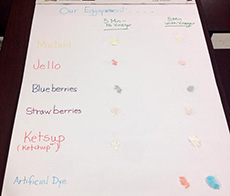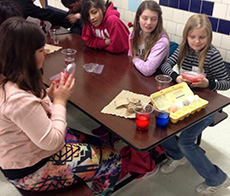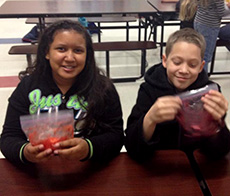Make Easter egg decorating a science experiment
Turn your Easter egg decorating into a science experiment that’s easy and fun for the whole family!

Decorating Easter eggs can be a ton of fun, but if you’re in an Easter egg slump and tired of doing the same thing year after year, it’s time to change it up! Easter egg decorating doesn’t need to just be dipping eggs in the dye that comes from the store. It can be so much more – it can be science!
It’s true! Decorating eggs this time of year can easily be turned into a family science experiment. Start by hard boiling your eggs. If you’re not sure how to do that, check out the Michigan State University Extension article, “Easy hard-boiled eggs.” Next, go in the kitchen as a family and start looking for simple items you already have that can easily be put into a baggie. Challenge your family members to think about things that can be cut up, mashed, left in their natural state, etc. Here’s some examples to get you started:
- Blueberries
- Strawberries
- Jell-O
- Ketchup
- Mustard
Once you have a few items gathered, place them in baggies. Now, make a chart on a piece of paper. Write down each person’s name across the top and each of the items you’re going to dye the eggs with down the left side of the paper. Make predictions and ask some of the following questions:
- Which baggie will dye the eggs the best?
- Which baggie will dye the eggs the worst?
- What would happen if we mix some of the items?
- What other items could we place in baggies to see if they will dye the eggs?



Jodi Wrzesinksi did a similar experiment with the Bay County Michigan 4-H Tech Wizards.
Don’t forget to re-cap with the family once the eggs have all been dyed. Was it fun? Would your family like to try it again next year? Should this be a family tradition? For more information about family traditions, see “Family traditions: Start one today.”
Go ahead, delve into science this Easter. See what new things you can try with the items you already have at home. Science doesn’t need to be complicated!
For more ideas on how to make science fun for kids, see “Inquiring minds want to know: Science for young children.”



 Print
Print Email
Email




